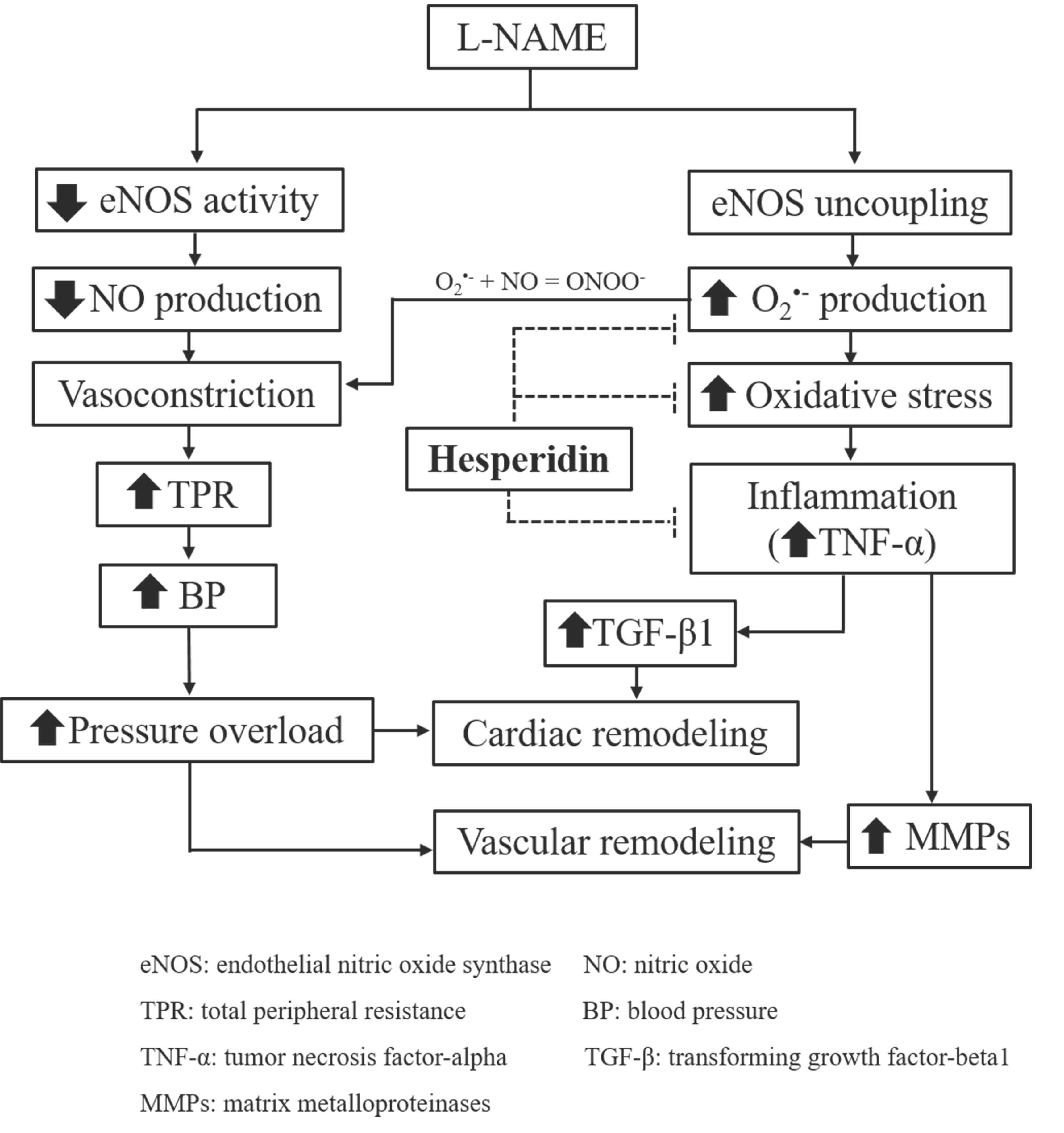Hesperidin is a major flavonoid isolated from citrus fruits that exhibits several biological activities. This study aims to evaluate the effect of hesperidin on cardiovascular remodeling induced by N-nitro L-arginine methyl ester (L-NAME) in rats. Male Sprague-Dawley rats were treated with L-NAME (40 mg/kg); L-NAME plus hesperidin (15 mg/kg), or hesperidin (30 mg/kg), or captopril (2.5 mg/kg) for five weeks (n = 8/group). Hesperidin or captopril significantly prevented the development of hypertension in L-NAME rats. Moreover, hesperidin or captopril alleviated L-NAME-induced cardiac remodeling; increases in wall thickness, cross sectional area (CSA) and fibrosis of left ventricular (LV), and vascular remodeling; increases in wall thickness, CSA, vascular smooth muscle cells and collagen deposition in the aorta. These were associated with reduced oxidative stress markers, tumor necrosis factor-alpha (TNF-α), transforming growth factor-beta 1 (TGF-β1) and enhancing plasma nitric oxide metabolite (NOx) in L-NAME treated groups. Furthermore, up-regulation of tumor necrosis factor receptor type 1 (TNF-R1) and TGF-β1 protein expression and the over-expression of matrix metalloproteinase-2 (MMP-2) and matrix metalloproteinase-9 (MMP-9) were suppressed in L-NAME rats treated with hesperidin or captopril. These data suggested that hesperidin had cardioprotective effects in L-NAME hypertensive rats. The possible mechanism may involve its antioxidant and anti-inflammatory effects.

